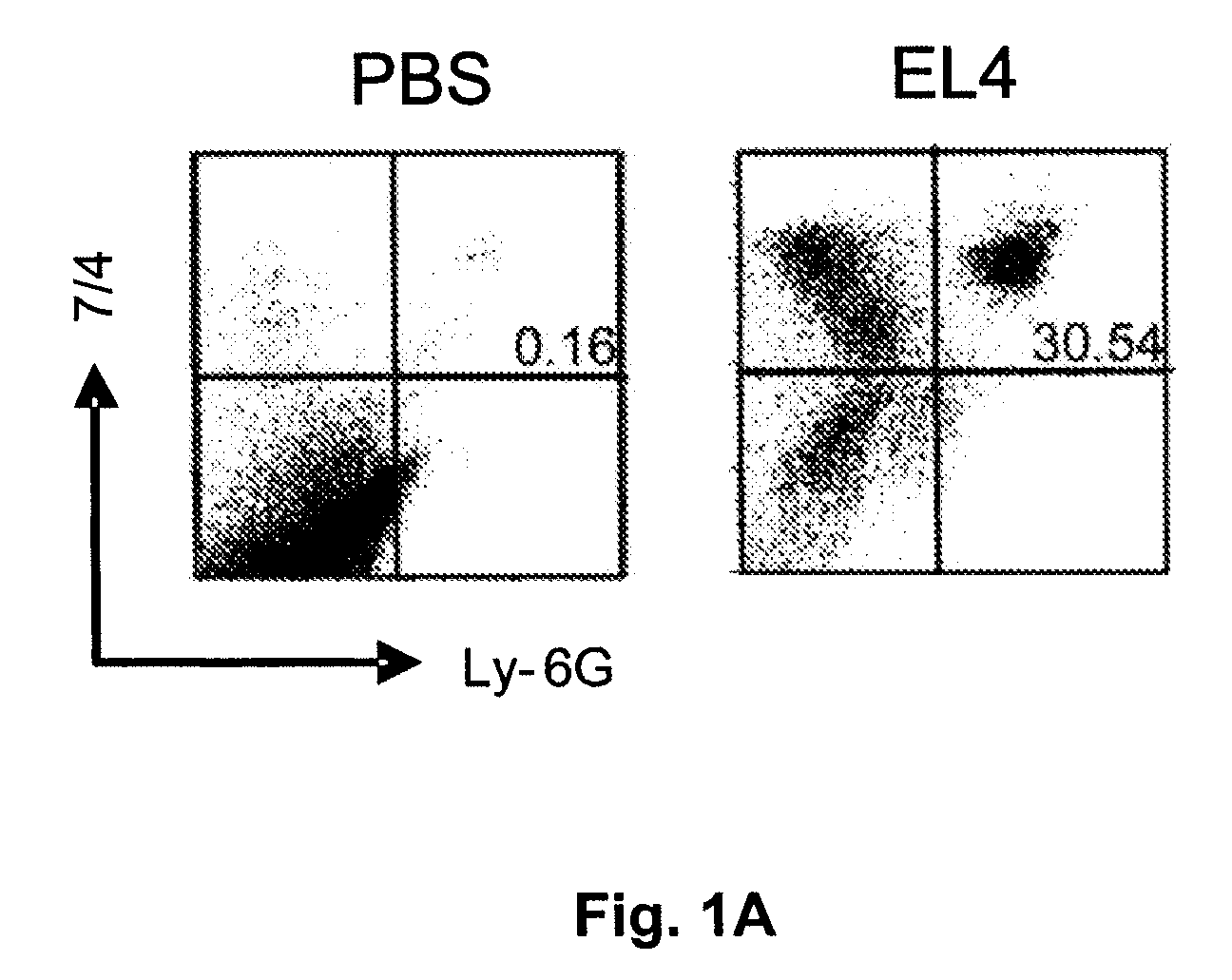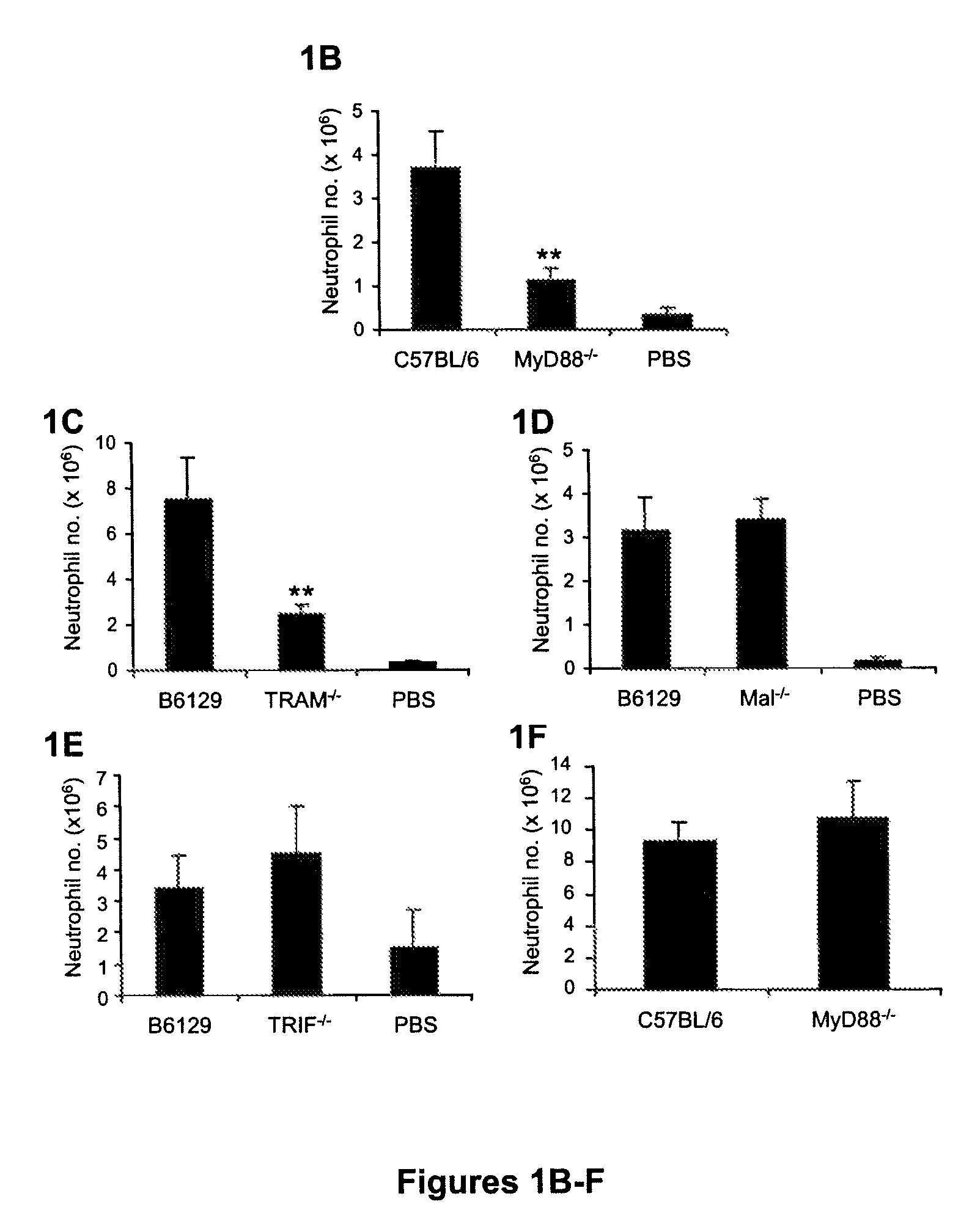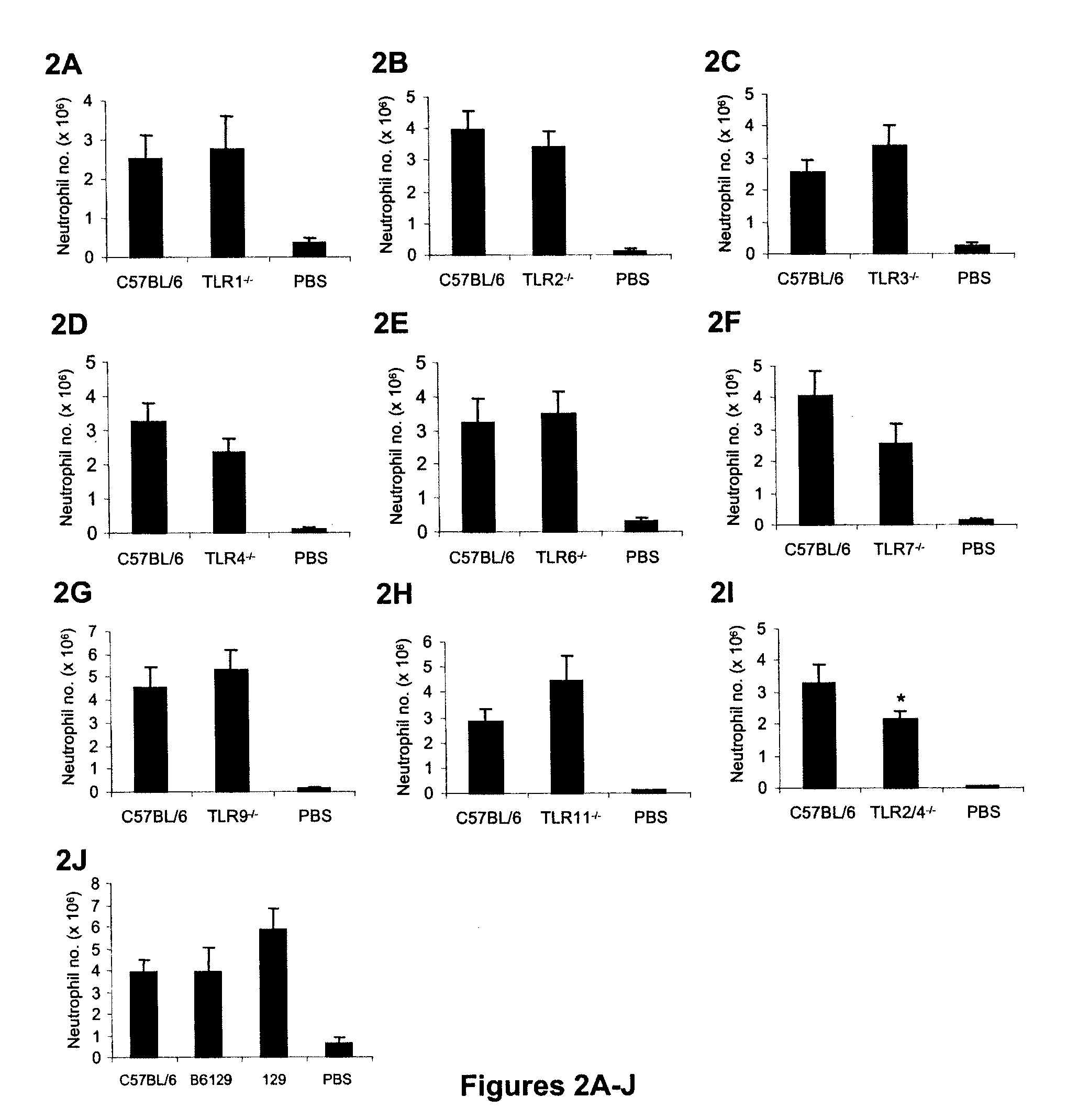Methods and compositions for the treatment of sterile inflammation
a technology of sterile inflammation and composition, which is applied in the direction of drug compositions, instruments, genetic material ingredients, etc., can solve the problems of not being able to target simultaneously all of the mediators produced, and the major downstream mediators that drive the inflammation response to tissue injury have not been clearly defined, so as to achieve treatment, prevent development or progression, or delay the effect of development or progression
- Summary
- Abstract
- Description
- Claims
- Application Information
AI Technical Summary
Benefits of technology
Problems solved by technology
Method used
Image
Examples
example 1
The Role of TIR Adaptor Proteins in Sterile Inflammation
[0096]In mammals TLR receptors play a major role in sensing the presence of microbes. When these receptors recognize microbial molecules they stimulate inflammation. It has been supposed that similar proteins and pathways are also activated during various types of sterile inflammation. However, it is presently unknown how important TLRs are in the inflammatory response provoked by dying cells.
[0097]TLRs signal through intracellular Toll / IL-1 receptor (TIR) adaptor molecules. The various TLRs utilize either one or several different TIR domain proteins: MyD88, TIRAP / Mal, TRIF, and TRAM. As a first step to examine whether TLRs are involved in mediating inflammation triggered by cell injury, the ability of mice deficient in each of the 4 TIR adaptors to respond to dead cells was analyzed. PBS or heat-shocked necrotic EL4 cells were injected intraperitoneally into wild type, MyD88− / −, Mal− / −, TRIF− / −, or TRAM− / − mice. After 16 hours...
example 2
The Role of TLRs in Sterile Inflammation to Injured Cells
[0099]The requirement of MyD88 and to a lesser extent TRAM during injured cell-induced inflammation suggested that TLRs could play a role in mediating this response. To investigate the role of TLRs in the sterile inflammatory response to dying cells, the response in mice that were genetically deficient in various TLRs was examined.
[0100]Necrotic EL4 cells were injected into the peritoneum of TLR-deficient mice and the acute inflammatory response was evaluated by quantifying the influx of neutrophils. The inflammation was modestly reduced in TLR2− / − and TLR4− / − mice, although this trend was not statistically significant in mice lacking only one or the other receptor (FIGS. 2B and 2D). In contrast, statistical analysis of the results of three independent experiments showed a significant reduction in neutrophil infiltration in TLR2 / 4 double-deficient animals compared with the wild type animals (FIG. 2I). These results indicate th...
example 3
Role of IL-1 and IL-18 Receptors in Sterile Inflammation to Injured Cells
[0102]The results from the experiments described thus far demonstrate that the inflammatory response to injured cells is much more dramatically affected by the loss of MyD88 than by the absence of any of the TLRs. These findings raised the possibility that a MyD88-dependent receptor other than TLRs might be involved in this process. There are in fact two other receptors that are known to utilize MyD88: the IL-1 receptor (IL-1R) and IL-18 receptor (IL-18R). Therefore, the ability of IL-1R and IL-18R-deficient mice to respond to injured cells was examined.
[0103]Necrotic EL4 cells were injected into the peritoneal cavity of IL-1R or IL-18R-deficient mice and the acute inflammatory response was evaluated. There was a reduction of 86.6% in the neutrophil response in IL-1R mutant mice at 16 hrs (FIG. 3A). In contrast the inflammatory response was not reduced in IL-18R-deficient mice (FIG. 3B). These results demonstra...
PUM
| Property | Measurement | Unit |
|---|---|---|
| pH | aaaaa | aaaaa |
| volumes | aaaaa | aaaaa |
| plasma membrane integrity | aaaaa | aaaaa |
Abstract
Description
Claims
Application Information
 Login to View More
Login to View More - R&D
- Intellectual Property
- Life Sciences
- Materials
- Tech Scout
- Unparalleled Data Quality
- Higher Quality Content
- 60% Fewer Hallucinations
Browse by: Latest US Patents, China's latest patents, Technical Efficacy Thesaurus, Application Domain, Technology Topic, Popular Technical Reports.
© 2025 PatSnap. All rights reserved.Legal|Privacy policy|Modern Slavery Act Transparency Statement|Sitemap|About US| Contact US: help@patsnap.com



